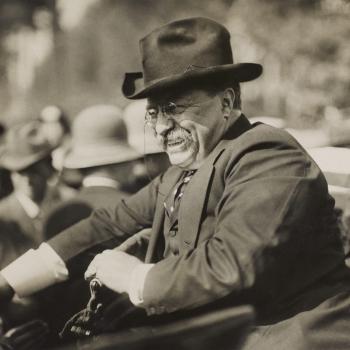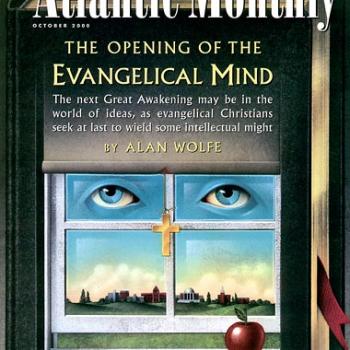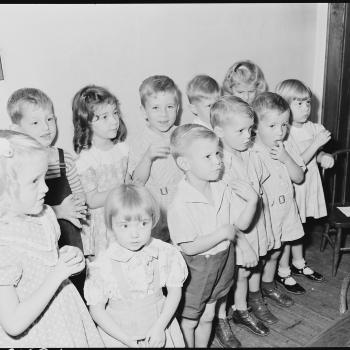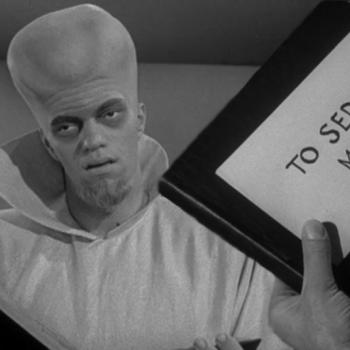Americans have heard a lot about the dangers of fake news of late and before that some were treated to the benefits that come from historical inquiry. Much of this introspection stemmed from — you guessed it — what to do about Donald Trump.
I myself have asserted that narratives are much more important than news. In fact, most journalists regularly insert the word “narrative” into their own analysis of the news. So when the story line emerges that evangelicals are and always were conservative, narrative watchers take notice. According to Neil J. Young (not to be confused with the singer):
The rise of the Moral Majority—an organization that attracted not 53 signees, but rather tens of thousands of evangelical members—and the religious right movement in general, demonstrated both the utter failure of the Chicago Declaration to reorient evangelical politics and the definitive proof that progressive initiatives would never be more than an aberration to the overwhelming prevalence of evangelical conservatism.
Instead, the bulk of white evangelicals’ political efforts have always veered to the right, often to the extreme. From Civil Rights to Vietnam to abortion to gay rights, from national defense to tax policy to climate change to health care and on and on, white evangelicals have solidly and consistently championed the most conservative positions. Where some white evangelicals have at times been found on the other side of these issues, they have only served to highlight the enormous evangelical majority that remained firmly to the right. If exceptions prove the rule, progressive evangelicals have done so categorically.
That’s a pretty large claim for a historian to make on the basis of only 4 decades of history. What about how egalitarian and even radical evangelicals were in the nineteenth-century? Kyle Roberts reminds Young:
As sociologist David Moberg argues in The Great Reversal, prior to the twentieth-century, evangelicals were leaders in progressive social reform movements. Many of them looked not just to convert souls, but change the world for the better, viewing progressive (for the time) social politics as the best way to do so.
And if you go back to nineteenth-century evangelical revivalism (as Donald Dayton has persuasively argued), you find leaders like Charles Finney, publicly asserting that God wouldn’t bless their revival if they didn’t first work to change unjust social structures, like slavery. Many of the forebears of contemporary evangelical Christianity were socially conscious abolitionists and egalitarians — even early feminists.
And let’s not forget that the Republican Party was not always Wall Street doing policy:
…the Republican Party at its founding was the home of anti-slavery activists. Democrats believed Republicans were radical and a threat to the political order of antebellum America. (Notice that the liberal and progressive party of choice today — the Democrats — was the pro-slavery party, a historical feature that progressive evangelicals usually ignore when complaining about Republican evangelicals.)
In fact, if you read books about nineteenth-century evangelicals, you understand that the agencies that promoted the Second Pretty Good Awakening included support for policy and legislation that formed the basis for mainline Protestantism’s social gospel and later evangelicals’ Moral Majority. John Pinheiro, in a very good book on the Mexican-American War calls evangelical politics the Beecherite Synthesis (named for the influential Boston pastor, Lyman Beecher):
This thinking blossomed during a religiously dynamic time in American history. The Second Great Awakening gave rise to the American Evangelical who was moved by a personal conversion experience. It was also the time when Mormonism, which also became a target of Protestant hegemony, was born.
A cohesive expression of this growing Protestant and nativist sentiment soon emerged, something Pinheiro calls the Beecherite Synthesis. Lyman Beecher, an evangelist and reformer, “synthesized into one argument American anxieties about westward settlement, economic uncertainty, and immigration by joining them to a theological commentary on what Divine Providence had in store for the future of liberty.”
The new Native American Party gave Beecher’s ideological framework political expression. Casting themselves as a non-partisan and patriotic alternative to the corrupt Democrats and Whigs, the Native Americans pointed to rising Irish Catholic immigration and the influx of Jesuits as dangers from which American republicanism must be protected.
Like the Catholics, Joseph Smith’s Latter-Day Saints were also deemed a threat to Protestant and republican America, but for different reasons. “What made Mormons a threat was their ability to organize, succeed, and prosper outside the prevailing white Protestant paradigm, much like Jewish Americans.” However, following the death of Smith, and the migration of the Mormons to the West, “Catholics remained as the only major, visible threat to republican government.”
This was the Protestant synthesis among Anglo-Americans with Reformed (Congregationalist and Presbyterian) backgrounds that laid the foundation for White Christian America. It was not the province of fundamentalists during the Reagan era. It goes deep in American Protestantism. Evangelicals or mainline Protestants who say otherwise are guilty of spin.












